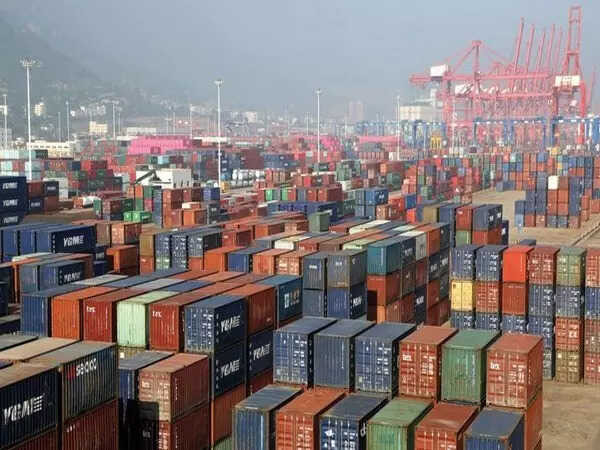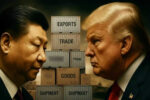India’s merchandise trade gap saw a slight decrease to $20.7 billion in June 2025, primarily due to lower crude oil prices and reduced gold imports. Strategic sourcing, including increased oil purchases from Russia and the US, helped mitigate the impact of global commodity price fluctuations.
India’s Trade Deficit: A Breath of Fresh Air?
The economic news cycle can often feel like a relentless barrage of figures and forecasts, but every now and then, a glimmer of positive news emerges. Lately, that glimmer has taken the form of India’s narrowing trade deficit. After months of anxiety-inducing widenings, June brought a welcome change, with the merchandise trade deficit easing to $20 billion. But what exactly does this mean, and is it a sign of a sustained shift or just a temporary blip?
Diving Deep: What Drove the Change?
The dip in the deficit wasn’t a stroke of luck. It was largely fueled by a notable decline in imports, specifically oil and gold. India, a major consumer of both commodities, saw a significant reduction in their inward flow. Lower global crude prices definitely played a role, easing the pressure on import costs. Similarly, a softening of demand for gold, perhaps influenced by changing investment patterns and seasonal factors, contributed to the overall decrease.
On the export front, things were a bit more nuanced. While overall merchandise exports dipped slightly to $38.13 billion, there’s no cause for immediate alarm. The global economic landscape remains turbulent, and minor fluctuations are to be expected. The key is to analyze the underlying trends and identify sectors that are showing resilience and growth potential. Perhaps our dynamic software and technology exports are holding steady? It is always important to consider sector breakdowns when analyzing trade performance.

Reading Between the Lines: The Bigger Picture
It’s easy to get caught up in the month-to-month numbers, but it’s crucial to step back and assess the broader context. India’s economic trajectory is intertwined with global events, from geopolitical tensions to shifts in consumer demand. The recent easing of the trade deficit shouldn’t be viewed in isolation but rather as one piece of a complex puzzle.
For example, the health of the global economy is a major determinant of Indian export performance. If major economies like the US and Europe experience a slowdown, it will inevitably impact India’s export demand. Similarly, fluctuations in commodity prices, driven by factors ranging from supply disruptions to shifts in investor sentiment, can significantly impact India’s import bill.
The Impact on the Rupee and the Economy
A smaller trade deficit can have a positive impact on the Indian Rupee. When imports exceed exports, it puts downward pressure on the currency. Conversely, a narrowing deficit can help stabilize or even strengthen the Rupee, making imports cheaper and potentially easing inflationary pressures.
Furthermore, a healthier trade balance can boost overall economic growth. A lower deficit contributes to a stronger current account balance, which is a key indicator of a country’s external financial position. This, in turn, can attract foreign investment and boost investor confidence. For related context, check out our article on [India’s evolving manufacturing landscape](india-manufacturing-growth).
Sustaining the Momentum: What Needs to Happen?
While the recent easing of the India trade deficit is encouraging, it’s essential to ask what steps can be taken to ensure that this positive trend continues. A multi-pronged approach is needed, focusing on boosting exports, reducing import dependence, and enhancing overall economic competitiveness.
On the export front, this means investing in infrastructure, streamlining regulatory processes, and providing incentives to exporters. It also means diversifying our export basket and targeting new markets.
Reducing import dependence requires a focus on domestic manufacturing, particularly in sectors like electronics, renewable energy, and defense. The government’s “Make in India” initiative is a step in the right direction, but more needs to be done to create a conducive ecosystem for domestic production.
Looking Ahead: Optimism with a Dose of Caution
The recent news regarding India’s trade deficit offers a sense of cautious optimism. While the easing of the deficit is a positive sign, it’s important to recognize that the global economic environment remains uncertain. Sustaining this momentum will require a concerted effort from policymakers, businesses, and individuals. By focusing on enhancing competitiveness, promoting exports, and reducing import dependence, India can navigate the challenges ahead and build a more resilient and prosperous economy. The key is to remain agile, adaptable, and focused on long-term sustainable growth.







